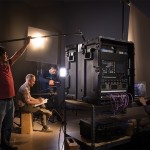Laser cutting is ideal for cutting aluminium, but when you laser cut aluminum you should know that it requires special handling and the right equipment to keep the quality of the aluminium of the highest standard.

The benefits of laser cut aluminium are how precise you can be. You can get clean, sharp and precise lines if you are going at the right speed. You should always know how to cut the aluminium otherwise you could compromise the aluminium if the right gas pressure and distance aren’t used. If your aluminium reaches a point of thermal stress, some structural changes can also occur. This means that the cut will not come out precise and clean, it will appear striated so proper training and knowledge are required by the personnel who handle this process.
The first thing you should know is that there are two major classes of lasers that are used in the metal cutting industry. These two classes include neodymium-doped crystal laser or carbon dioxide gas lasers. They both work differently, carbon dioxide lasers use gas to manage the laser light beam whereas the crystal laser amplifies the light beam through solid crystal. The laser used will be chosen depending on what kind of cut you are going for or how thick the aluminium that needs to be cut is.
A carbon dioxide laser is the most popular choice but both are still used. The beam of the carbon dioxide laser is found inside the machinery and can output between 1500 – 2600 watts. A lot of different industries use the carbon dioxide laser as it can cut many different materials including glass, wood, plastic and nearly every metal out there. While it’s good at generally cutting, it doesn’t work well when you have something that needs to be cut that is made up of more than one material.
Most materials need different temperatures to melt so this can become difficult very fast. Anything that has a complex frame like 3D materials, will need to be cut using a different method. The best type of aluminium to cut with this laser is sheets of aluminium that are between 0.12mm thick to 0.4mm thick. The carbon dioxide laser is also used for a lot of other applications other than cutting. It is also used for welding, drilling ablation, engraving, and structuring. To utilize this to laser cut aluminum, you can either move the aluminum sheet beneath the laser or move the head of the laser over the sheet of aluminium.
The second technique is referred to as a flying optics system and is usually connected to a computerized cutting system. These systems are more popular for large industrial cutting applications because a large sheet of aluminium would be too heavy, awkward, and difficult to move underneath the laser.
There are a few important things to take into consideration when cutting aluminium. Power consumption is one of them as it uses more power than other cutting techniques. Additional costs will also happen when needed to remove waste material and to maintain high cut quality. The thermal conductivity of aluminum also may limit the thickness of the aluminium that can be cut with a laser. The laser creates high temperatures that can change the aluminum edges so this may need additional heat treating.
It is also important that the correct safety measures are put in place to protect employees and manufacturers alike. Some of these safety procedures could mean safety equipment such as goggles which are needed as this process can produce some smoke and dust. Ventilation is also a way you could counteract this as well as protect from some toxic fumes that metal and plastic can produce. If you are working with laser cut aluminium, it is always important to put safety first.


